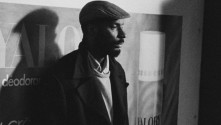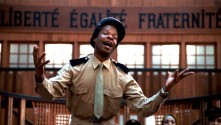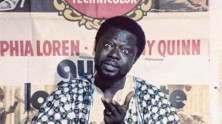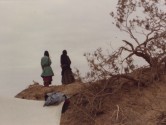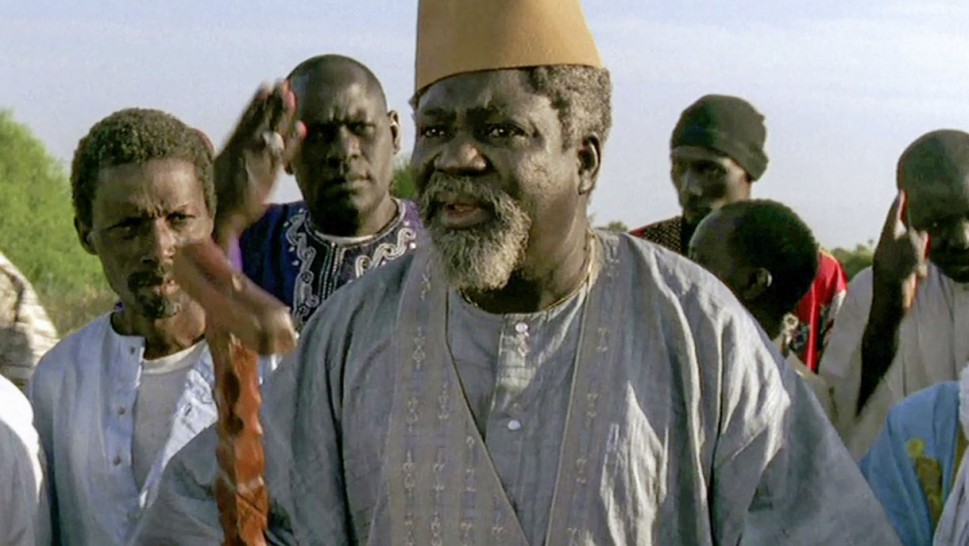
Fatima, the Algerian Woman of Dakar
(Fatima, l’Algérienne de Dakar)
With Aboubacar Sadikh Ba, Amel Djemel, Thierno Ndiaye.
Mauritania/Tunisia/France/Senegal, 2004, 35mm, color, 89 min.
French, Arabic and Wolof with English subtitles.
Print source: HFA
In his adaptation of a short story by the late Tahar Cheriaa, founder of the Carthage Film Festival in 1966, Med Hondo explores the legacies of decolonization. A testimony to the director’s profound investment in the historical, the film tells the story of Fatima, an Algerian woman who is raped during her country’s liberation war in 1957 by Souleymane Fall, a young Senegalese officer heading a column of the occupying French colonial army. A few years later after his return to Senegal, Souleymane is summoned by his father and ordered to go back to Algeria and repair the harm he caused Fatima, who, meanwhile has been the object of unspeakable racism for carrying a Black son. Souleymane, Fatima and their son Abdelkader ultimately return to Senegal to start a new life potentially full of promise.
As a brilliant hymn to the Pan-African project and a beautiful homage to the figure of Frantz Fanon, Fatima could also be looked at in terms of Med Hondo’s attempt at a political cinema aimed at creating what Deleuze refers to as a “people to come” (un peuple à venir). By cinematically bringing Fatima, the Algerian woman, to Dakar, Med Hondo does in effect partake in literally forging a Pan-African people, a people that would emerge from the bringing together of the cultures of Africa North and South of the Sahara, for the creation of a new Africa. Such is Med Hondo’s ultimate message in what turned out to be his testament film.
Med Hondo conceived his fourth film as a response by a “third-worlder of cinema” (Marker) to Louis Malle’s Calcutta (1969), which he considered miserabilist. It is at once an individual filmic object and a part of a longer magnum opus entitled Les Bicots-Nègres, vos voisins, completed a few years later. As a standalone film, it is very well structured in several parts, made of an interview, a sung montage sequence of observational scenes about the slum dwelling conditions of primarily migrant African workers and long sequences where migrants collectively air their grievances about their untenable living conditions and seek to understand and articulate them in relation to the broader open-air carceral system that holds and maintains them in such conditions, concluding with an animation photomontage which engages in the explanatory paradigm by exposing what Marx refers to as “the hidden foundation” of their predicament.
In many ways, Mes voisins is a child of the direct cinema/cinema verité debates of the late 1950s and early 1960s, which foregrounded the use of sync sound and lightweight cameras to represent the real. The possibility to approach the migrants and capture their testimonies was predicated on that technology and that method. In that regard, it is ironic that Hondo who was a virulent critic of Jean Rouch very much embodied some of his techniques (certainly if we refer to Chronique d’un été.) The concept of the interactive camera, the foregrounding of the interview, and the notion that observation alone is not enough, that the mise en scène of speech must also be put at the center of the documentary dispositif, are all significant here.
Mes voisins also resonates with an older history of documentary, that of the 1930s Griersonian tradition, which canvasses the working and living conditions of the working class. But in this film, while the context of capitalism remains, its articulation to the imperial, the colonial and the racial highlights its singularity, producing a new context.


